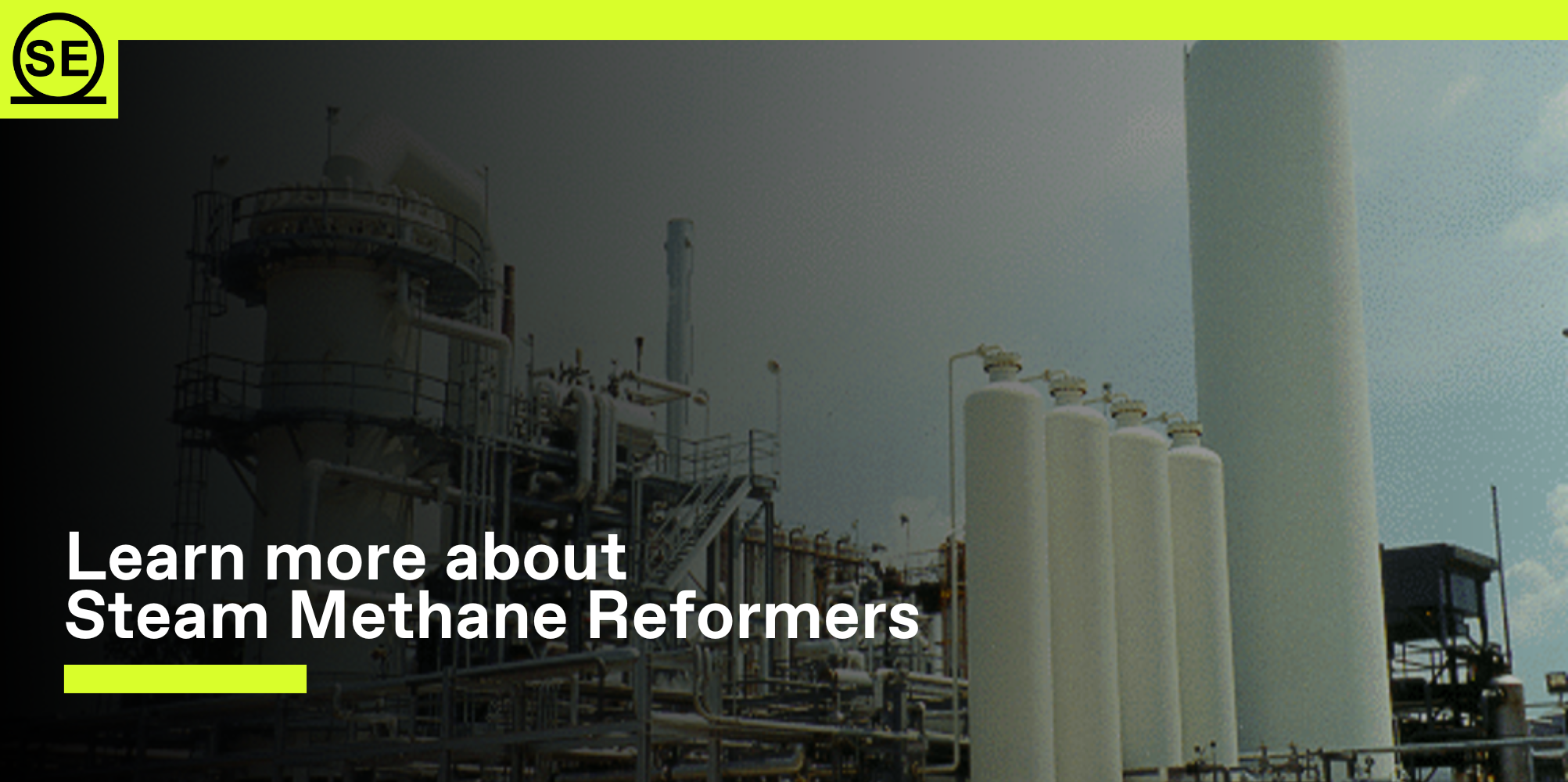
Steam Methane Reformer: The Heart of Hydrogen Production
Steam Methane Reforming (SMR) is a critical industrial process for hydrogen production, pivotal in meeting the demands of various sectors, including refining, chemical synthesis, and increasingly, clean energy and renewable fuel solutions. In this article, learn more about the steam methane reformer (SMR) process, exploring how it works and why it is so widely utilized in industry.
What is a Steam Methane Reformer?
Steam Methane Reforming is the chemical process used to produce hydrogen, carbon monoxide, and a small amount of carbon dioxide by reacting methane—the primary component of natural gas—with steam. Other hydrocarbon feeds can also be utilized, such as LPG, butane, and naphtha. The reaction typically occurs at high temperatures (1500°F to 1700°F) and under pressure in the presence of a nickel-based catalyst, which facilitates the conversion.
Steam methane reformer process (smr)
The SMR process involves several key steps:
- Feed Pre-treatment: The natural gas, or other hydrocarbon feed, is first purified to remove impurities like sulfur compounds, which can poison the catalyst used in the reformer.
- Primary Reforming: The purified feed and steam are then fed into a primary reformer where they react to form hydrogen, carbon monoxide, and a smaller amount of carbon dioxide. This reaction is endothermic, meaning it requires heat to proceed, which is typically supplied by burning PSA Off gas and makeup fuel.
- Secondary Reforming: Some setups include a secondary reforming step where additional air or oxygen is introduced to convert more methane and increase the hydrogen yield. This also helps in maintaining the high temperature needed for the reaction.
- Water-Gas Shift Reaction: Following reforming, the gas and steam mixture passes through the water-gas shift reaction where carbon monoxide and steam are converted into carbon dioxide and more hydrogen. This reaction is slightly exothermic, releasing heat.
- Gas Purification: The final step involves purifying the gas to remove carbon dioxide and any other impurities, resulting in high-purity hydrogen suitable for commercial use. This is typically accomplished with the Pressure Swing Adsorption (PSA) system.
Why is a Steam Methane Reformer Used?
Economic Efficiency: SMR is currently the most cost-effective method of hydrogen production in most cases, especially where natural gas is plentiful and relatively inexpensive. The economics of SMR are favorable compared to other methods like electrolysis, particularly at industrial scale.
High Purity Output: SMR can produce very high purity hydrogen, which is essential many refining and industrial processes, including sulfur reduction in transportation fuels and the semiconductor industry, as well as for hydrogen fuel cells used in vehicles and other clean energy applications.
Scalability: The process is highly scalable, making it suitable for large-scale industrial applications. Large volumes of hydrogen are needed in refining processes, chemical synthesis, and more recently, to support the growing infrastructure for hydrogen-based energy systems.
Steam Methane reformer Challenges and Considerations
SMR is a cornerstone of today’s hydrogen production. Despite its advantages though, SMR is not without challenges. The process is energy-intensive and heavily reliant on fossil fuels, contributing to CO₂ emissions unless combined with carbon capture and storage technologies.
Conclusion
A steam methane reformer plays a vital role in the current industrial landscape, particularly in hydrogen production. At Samuel, our hydrogen team brings a broad range of expertise. With decades of steam methane reformer experience, Samuel will maximize value and efficiency at every stage of your hydrogen/syngas project, including engineering, procurement, modular fabrication, and construction. Contact John Cotten (jcotten@samuelengineering.com) to learn more.
Follow us on social media:
